Related Research Articles

Cumbria is a ceremonial county in North West England. It borders the Scottish council areas of Dumfries and Galloway and Scottish Borders to the north, Northumberland and County Durham to the east, North Yorkshire to the south-east, Lancashire to the south, and the Irish Sea to the west. Its largest settlement is the city of Carlisle, which is also its county town.

Ulverston is a market town and civil parish in Westmorland and Furness, Cumbria, England. Historically in Lancashire, it lies a few miles south of the Lake District National Park and just north-west of Morecambe Bay, within the Furness Peninsula. Lancaster is 39 miles (63 km) to the east, Barrow-in-Furness 10 miles (16 km) to the south-west and Kendal 25 miles (40 km) to the north-east. In the 2001 census the parish had a population of 11,524, increasing at the 2011 census to 11,678.
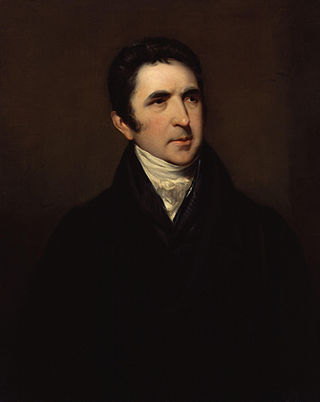
Sir John Barrow, 1st Baronet, was an English geographer, linguist, writer and civil servant best known for serving as the Second Secretary to the Admiralty from 1804 until 1845.

Barrow-in-Furness is a port town and civil parish in the Westmorland and Furness district of Cumbria, England. Historically in Lancashire, it was incorporated as a municipal borough in 1867 and merged with Dalton-in-Furness Urban District in 1974 to form the Borough of Barrow-in-Furness. The borough was merged into the new Westmorland and Furness district in 2023. At the tip of the Furness peninsula, close to the Lake District, it is bordered by Morecambe Bay, the Duddon Estuary and the Irish Sea. In 2021, Barrow's population was 55,489, making it the second largest urban area in Cumbria after Carlisle, and the largest in the Westmorland and Furness unitary authority.
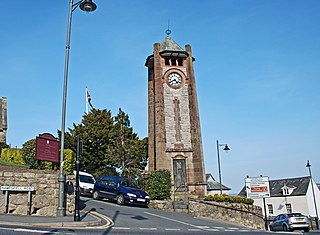
Grange-over-Sands is a town and civil parish on the north side of Morecambe Bay in Cumbria, England, a few miles south of the Lake District National Park. In the 2011 census the parish had a population of 4,114, increasing at the 2021 census to 4,279. Within the boundaries of the historic county of Lancashire, the town became administered as an urban district in 1894. Though the town remains part of the Duchy of Lancaster, since 2023 it has been administered as part of the Westmorland and Furness Council area.

Stan Laurel was an English comic actor, writer and film director who was one half of the comedy duo Laurel and Hardy. He appeared with his comedy partner Oliver Hardy in 107 short films, feature films and cameo roles.
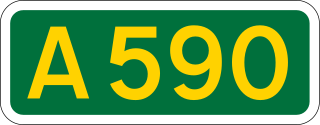
The A590 is a trunk road in southern Cumbria, in the north-west of England. It runs north-east to south-west from M6 junction 36, through the towns of Ulverston and Barrow-in-Furness to terminate at Biggar Bank on Walney Island. The road is a mixture of dual carriageway and single carriageway, with the section east of Low Newton, Cumbria to the M6 being mainly dual. Further dual sections are south of Newby Bridge, south of Greenodd and south of Ulverston. The road is the main route for tourists entering the southern Lake District. It has often humorously been described as "the longest cul-de-sac in the world".

Dalton-in-Furness is a town in Westmorland and Furness, Cumbria, England, 4 miles (6 km) north east of Barrow-in-Furness. Along with the rest of the Furness peninsula, it was historically part of Lancashire. It is in the parish of Dalton Town with Newton, alongside the nearby hamlet of Newton-in-Furness. In 2011 it had a population of 7,827.
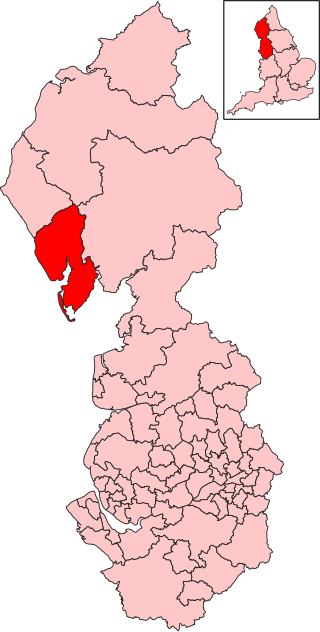
Barrow and Furness, formerly known as Barrow-in-Furness, is a UK Parliament constituency in Cumbria. It has been represented in the House of Commons of the UK Parliament by Michelle Scrogham of the Labour Party since 2024.

The Mail, known previously as the North-West Evening Mail (1987–2017), is a daily, local newspaper in the United Kingdom, printed every morning. It is based in Barrow-in-Furness.
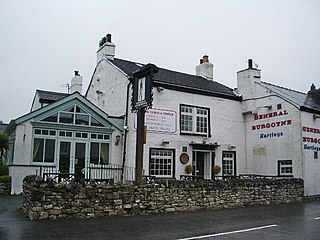
Urswick is a civil parish that includes the villages of Great Urswick and Little Urswick. It is located in the Furness area of Cumbria, England. The villages are situated to the south-west of the town of Ulverston. In the 2001 census the parish had a population of 351, decreasing at the 2011 census to 1,397.
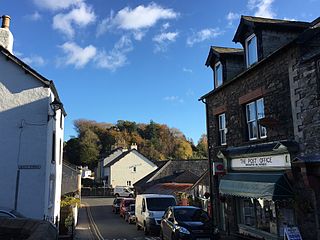
Broughton in Furness is a market town in the civil parish of Broughton West in the Westmorland and Furness district of Cumbria, England. It had a population of 529 at the 2011 Census. It is located on the south western boundary of England's Lake District National Park, and in the Furness region, which was historically part of Lancashire.
Ulverston Victoria High School (UVHS) is a secondary school and sixth form located in the town of Ulverston, Cumbria, England. It is the successor school to Ulverston Grammar School and Victoria Secondary Modern, which were combined in 1967 to form Ulverston Comprehensive School. This school ultimately became UVHS.

Sir John Barrow Monument is a 100-foot (30 m) tower at the top of the 436-foot (133 m) Hoad Hill, near Ulverston in Cumbria, England. It commemorates Sir John Barrow (1764-1848), who was born in Ulverston. It was built in 1850 at a cost of £1250, the cost being met mainly by public subscription.

Cumbria Fire and Rescue Service is the statutory fire and rescue service for Cumberland and Westmorland and Furness in England. Since 2012, the headquarters for the service's 38 fire stations are at Penrith next to the headquarters of Cumbria Constabulary.
Thomas Fell, was a lawyer, member of parliament and vice-chancellor of the Duchy of Lancaster.

William George Ainslie JP was a British Conservative politician, magistrate, ironmaster and stockbroker.
Reg Parker was an English professional rugby league footballer who played in the 1940s, 1950s and 1960s, coach of the 1970s, and was an administrator of the 1980s. He played at representative level for England and Lancashire, and at club level for Whitehouse Juniors ARLFC, Barrow, Wakefield Trinity, and Blackpool Borough, as a prop, or second-row, coached at representative level for Great Britain, and was the chairman of the Rugby Football League (RFL) for the 1984–85 Rugby Football League season.
References
- ↑ "Ulverston". Cumbria County History Trust. Retrieved 12 August 2018.
- ↑ Barrow, John (2011). An Auto-biographical Memoir of Sir John Barrow, Bart, Late of the Admiralty Including Reflections, Observations, and Reminiscences at Home and Abroad, from Early Life to Advanced Age (Reprint. ed.). New York: Cambridge Univ Pr. p. 5. ISBN 978-1-108-00470-1.
- ↑ "TOWN BANK GRAMMAR SCHOOL ULVERSTONE. (Hansard, 4 April 1895)". api.parliament.uk. Hansard. Retrieved 12 August 2018.
- ↑ The National Archives. "Town Bank and St Mary's Sunday Schools". discovery.nationalarchives.gov.uk. The Discovery Service. Retrieved 12 August 2018.